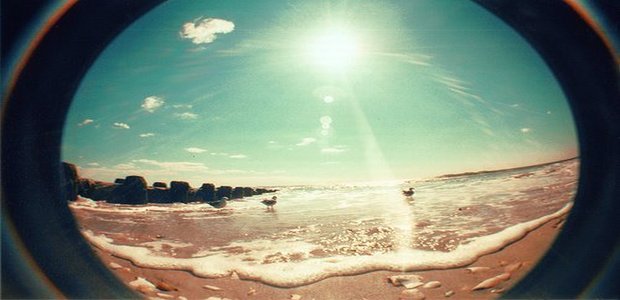Our planet constitutes of oceans which are yet to be explored fully. The deepest of oceans are home to some of the most mysterious creatures not witnessed by many. The murkiness of the ocean depths hides a conspicuously colourful collection of little-seen sea-life. In order to photograph these deep- living creatures up close and personal, David Shale joins research teams on lengthy voyages across the world’s great oceans.
Cirrate Octopod – Submersibles are sent down to capture the residents of the deep, before returning to the surface for their catches to be observed scientifically in special tanks. Shale then sets to work, taking extraordinary shots of startling sealife, such as this cirrate octopod (Stauroteuthis syrtensis), captured at a depth of 830m (2723ft) in the Gulf of Maine, off the east coast of the US.
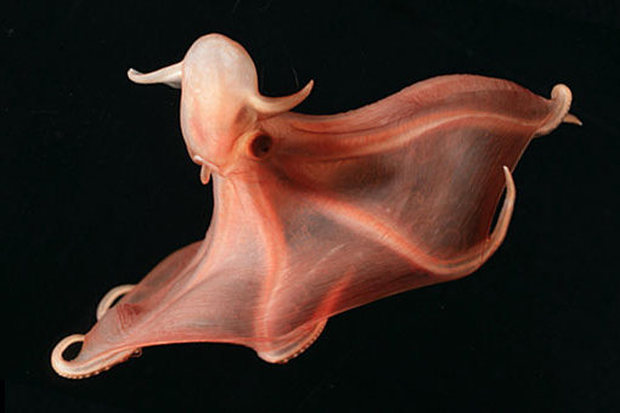
Acorn Worm – This possible new species of acorn – or enteropneust – worm was discovered in the waters of the North Atlantic at an approximate depth of 2700m (8859ft). It was one of the discoveries of a six-week voyage to the Mid-Atlantic Ridge – the tectonic plate boundary stretching north- to-south under the great ocean. Three different coloured acorn worms were found (purple, pink and white), all with differing bodyshapes, and are believed to be the missing evolutionary link between backboned and invertebrate animals.

Marine Amphipod – This Arctic marine amphipod Paramphithoe hystrix casts a beady eye towards Shale’s lens. It was discovered in the chilly Barents Sea, north of Scandinavia and Russia, as part of the Census Of Marine Life, an extraordinarily extensive, decade-long survey of underwater lifeforms. The census was undertaken by 2700 scientists from 80 countries, and reported its substantial findings in 2010. Among them were more than 6000 hitherto unknown species.
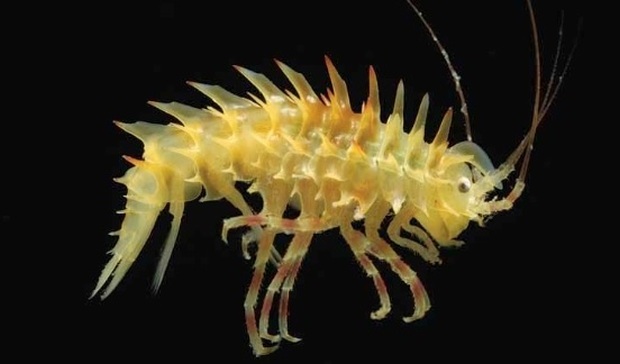
Pram Bug – The pram bug (Phronima sedentaria) uses the bodies of others to go about its business. This crustacean attacks barrel-shaped salps, eating the animal and hollowing out its shell. It then takes occupation of this gelatinous casing, inside which it lays its eggs before ‘driving’ the barrel through the ocean. The larvae grow by feeding on the food floating in their path.
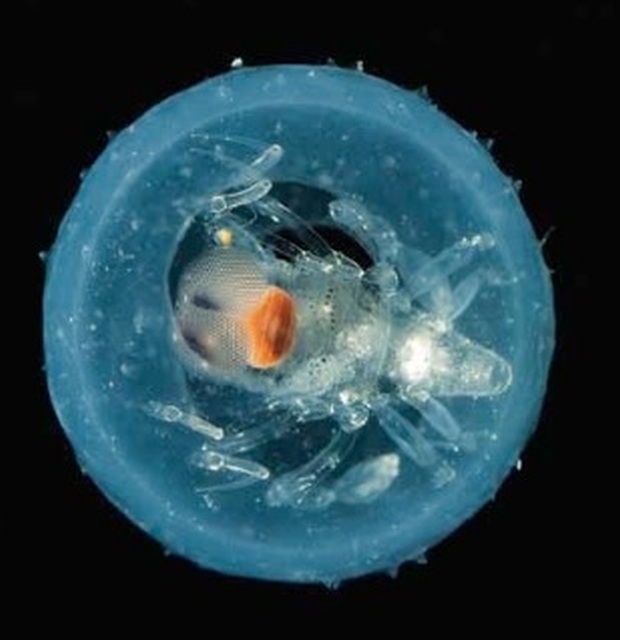
Comb Jelly – While many of these creatures spend all their lives several hundred metres below the waves, this comb jelly (Beroe cucumis) lives at a range of depths – from close to the surface all the way to nearly 4000m (13,124ft) down. Likened in size and shape to a flexible courgette, the comb jelly is equipped with a gravity-sensor called a statocyst, giving it a clear sense of position in the water. As it swims, its eight rows of protruding, hair-like cilia shimmer, creating all the colours of the spectrum.

Deep-Sea Dragonfish– Looking like the inspiration behind Ridley Scott’s Alien, it’s hard to imagine how this deep-sea dragonfish (Eustomias tetranema) could appear any more menacing. Its vicious teeth are illuminated by its barbel – the long protrusion hanging from its chin. At its tip is a photophore, which produces light through a process known as bioluminescence. Able to switch the light on and off (as well as waving the barbel from side to side), the dragonfish lures its prey of small fish and crustaceans, who meet a grisly end thanks to those fangs.
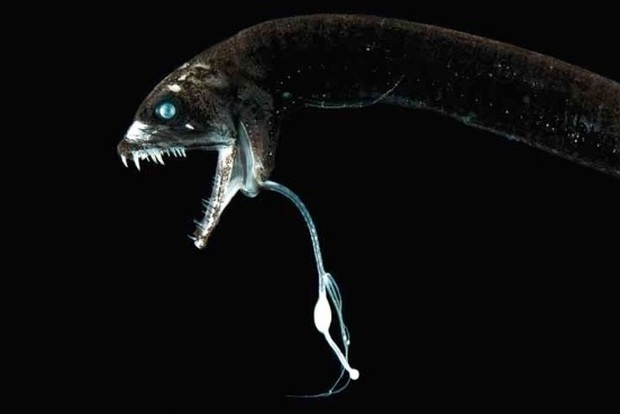
Yeti Crab – On Shale’s latest trip – this time to the ‘Dragon Vent’ in the southwest Indian Ocean last November – he took this shot of a deep-sea yeti crab (Kiwa sp.). Yeti crabs previously found in the Pacific have hairy bristles covering their long arms that ‘farm’ bacteria, which they then feed upon. Their Indian Ocean counterparts, seen for the very first time, have much shorter arms, and it’s their undersides that have developed these bristles.

Angler Fish – Angler fish are never going to win any beauty contests, but they are highly effective predators. This is down to the illicium – the spine protruding from above the eyes that lures small fish close enough to eat. Most angler fish have a bioluminscent bulb on the end of the illicium – but this fanfin seadevil (Caulophryne jordani) doesn’t. Instead, it has to rely more on stealth and camouflage. Although Shale’s photograph clearly shows the fanfin seadevil to be red in colour, down in the murky depths red is a poor reflector of light, making this little devil effectively invisible to its prey.
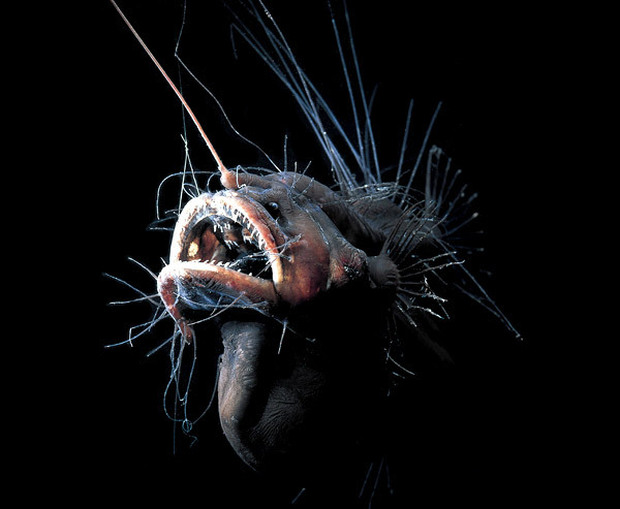
Hydromedusa – Photographed from underneath, the tentacles and bell of this hydromedusa (Crossota sp.) wear colors that would dazzle even in bright sunlight. This particular specimen is, like the acorn worm, a deep-water resident of the Mid-Atlantic Ridge. The research trips in this area uncovered many different creatures on either side of the ridge, radically recalibrating marine biologists’ previous thinking. And, with the evolution of even more pinpoint-precise technology, the future will surely shed further light on exactly what lies beneath.

As well as being world-renowned for his photography of deep-sea animals, David Shale has, for the last quarter of a century, worked as a wildlife film-maker. He was a contributor to the multi-award-winning BBC TV series The Blue Planet, himself awarded the Best Cinematography prize by the British Academy of Film and Television Arts.
Visit David Shale’s official website.
-end-


























